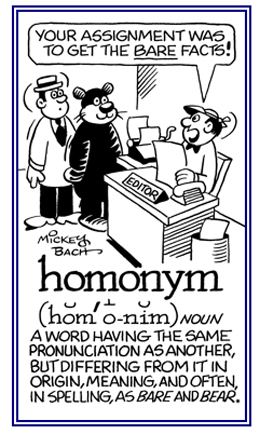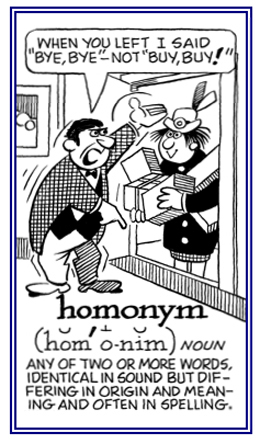homo-, hom- +
(Greek: same, equal, like, similar, common; one and the same)
This Greek prefix forms many scientific and other terms, often in opposition to hetero-. Don’t confuse this Greek homo- element with the Latin homo- which means “mankind”.
2. The correspondence of a part or organ of one animal with a similar part or organ of another one, determined by agreement in derivation and development from a like primitive origin, as the foreleg of a quadruped, the wing of a bird, and the pectoral fin of a fish.
3. In chemistry, a similarity in compounds having the same fundamental structure but differing in constituents by a regular succession of changes; such as, the alcohols.
2. In zoology, a resemblance in form between the immature and adult stages of an animal.
2. The regeneration of an organ or part similar to the one lost.
2. In zoology, a resemblance in form between the immature and adult stages of an animal.
3. Of, relating to, or characterized by a similarity of form but different structure.
4. Relating to two or more structures of similar size and form, usually of synaptic chromosomes.
5. In mathematics, a transformation of one set into another that preserves in the second set the operations between the members of the first set.
2. Resemblance in external characteristics, while widely different in fundamental structure.
A homonym is also called a homophone and a homograph.
2. A word identical with another in spelling and pronunciation, but differing from it in origin and meaning: Two examples of homonyms which are spelled the same are butter, the food, and butter, one who butts.
3. The same name or word used to denote different things: The words bare, bear and bye, bye; buy, buy are examples of homonyms, as indicated in the cartoons below.


Go to this Word A Day Revisited Index
so you can see more of Mickey Bach's cartoons.
Whenever Laura is stumped about a definition for a confusing-word group, she checks the online dictionary because it is precise and clear; for example, homonym and homophone refer to words that have similar definitions, but the term homophone is more precise.
Two other words are homograph and heteronym which include spellings that may be the same; however, the definitions are very different.
2. Someone with the same name as another.
3. In biology, a taxonomic name that is the same as one already designating a different species or genus and cannot therefore be used.
Information about Homophones and Homonyms, Explained and Demonstrated.
Another page about Homonyms, Homographs, and Homophones.
Confusing Words Related to Homonyms, Homophones, etc.: Units, Groups A to Y.
Inter-related cross references, directly or indirectly, involving word units dealing with "equal, identical, same, similar": auto-; emul-; equ-, equi-; homeo-; iso-; pari-; peer; rhomb-; syn-; tauto-.


